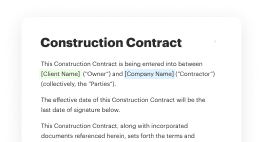eSignature Legitimacy for Disclosure Notice in European Union
- Quick to start
- Easy-to-use
- 24/7 support
Simplified document journeys for small teams and individuals




We spread the word about digital transformation
Why choose airSlate SignNow
-
Free 7-day trial. Choose the plan you need and try it risk-free.
-
Honest pricing for full-featured plans. airSlate SignNow offers subscription plans with no overages or hidden fees at renewal.
-
Enterprise-grade security. airSlate SignNow helps you comply with global security standards.







Your complete how-to guide - esignature legitimacy for disclosure notice in european union
eSignature Legitimacy for Disclosure Notice in European Union
In the European Union, eSignature legitimacy is crucial, especially for documents like Disclosure Notices. Using airSlate SignNow can ensure that your eSignatures are legally binding and compliant with EU regulations.
Steps to Utilize airSlate SignNow:
- Launch the airSlate SignNow web page in your browser.
- Sign up for a free trial or log in.
- Upload a document you want to sign or send for signing.
- If you're going to reuse your document later, turn it into a template.
- Open your file and make edits: add fillable fields or insert information.
- Sign your document and add signature fields for the recipients.
- Click Continue to set up and send an eSignature invite.
airSlate SignNow empowers businesses to send and eSign documents with an easy-to-use, cost-effective solution. It offers great ROI, is easy to use and scale, tailored for SMBs and Mid-Market, has transparent pricing with no hidden fees, and provides superior 24/7 support for all paid plans.
Experience the benefits of airSlate SignNow today and streamline your document signing process with ease!
How it works
Rate your experience
What is the esignature legitimacy for disclosure notice in european union
The esignature legitimacy for disclosure notices in the European Union refers to the legal recognition and acceptance of electronic signatures in the context of documents that require disclosure. These signatures are considered valid and enforceable under the eIDAS Regulation, which establishes a framework for electronic identification and trust services across EU member states. This framework ensures that electronic signatures hold the same legal weight as handwritten signatures, provided they meet specific criteria.
In the U.S., understanding the legitimacy of such signatures can help businesses ensure compliance with international standards when dealing with European partners or clients. By utilizing a reliable eSignature solution like airSlate SignNow, users can create, send, and manage disclosure notices efficiently, ensuring that their electronic signatures are legally binding and secure.
How to use the esignature legitimacy for disclosure notice in european union
To effectively use the esignature legitimacy for disclosure notices in the European Union, businesses should follow a structured process. First, ensure that the document is prepared in a format compatible with electronic signatures, such as PDF. Next, upload the document to airSlate SignNow, where users can easily fill out required fields and add their signatures.
Once the document is ready, users can send it for signature to relevant parties. airSlate SignNow allows for tracking the status of the document, ensuring that all parties complete their signatures in a timely manner. After all signatures are collected, the final document can be securely stored or shared as needed, maintaining compliance with legal standards.
Steps to complete the esignature legitimacy for disclosure notice in european union
Completing the esignature legitimacy for a disclosure notice involves several straightforward steps:
- Prepare the disclosure notice document in a digital format.
- Log into your airSlate SignNow account and upload the document.
- Fill out any necessary fields within the document.
- Add signature fields for all required signers.
- Send the document for signature to each signer.
- Monitor the signing process through airSlate SignNow’s tracking features.
- Once all signatures are collected, download and securely store the completed document.
This process ensures that the disclosure notice is legally binding and compliant with the required standards for electronic signatures.
Key elements of the esignature legitimacy for disclosure notice in european union
Key elements that contribute to the legitimacy of electronic signatures for disclosure notices in the European Union include:
- Authentication: Ensuring that the identity of the signer is verified through secure methods.
- Integrity: Maintaining the integrity of the document to prevent alterations after signing.
- Non-repudiation: Providing evidence that the signer cannot deny their signature on the document.
- Compliance: Adhering to the regulations set forth by the eIDAS framework.
By focusing on these elements, users can ensure that their electronic signatures are not only legitimate but also enforceable in legal contexts.
Security & Compliance Guidelines
When utilizing electronic signatures for disclosure notices, it is essential to adhere to security and compliance guidelines to protect sensitive information. Users should ensure that their eSignature solution, such as airSlate SignNow, employs robust encryption methods to safeguard data during transmission and storage.
Additionally, compliance with relevant regulations, such as the eIDAS Regulation in the EU and the ESIGN Act in the U.S., is crucial. These regulations outline the requirements for valid electronic signatures, including the need for user consent and the ability to retain a copy of the signed document for record-keeping purposes. Regular audits and updates to security protocols can further enhance compliance and protect against potential risks.
-
Best ROI. Our customers achieve an average 7x ROI within the first six months.
-
Scales with your use cases. From SMBs to mid-market, airSlate SignNow delivers results for businesses of all sizes.
-
Intuitive UI and API. Sign and send documents from your apps in minutes.
FAQs
-
What is the esignature legitimacy for disclosure notice in European Union?
The esignature legitimacy for disclosure notice in European Union refers to the legal recognition of electronic signatures under EU regulations. This ensures that documents signed electronically are valid and enforceable, providing businesses with a reliable way to manage disclosures.
-
How does airSlate SignNow ensure esignature legitimacy for disclosure notice in European Union?
airSlate SignNow complies with the eIDAS regulation, which governs electronic signatures in the EU. This compliance guarantees that all electronic signatures created through our platform are legally binding and recognized for disclosure notices.
-
What features does airSlate SignNow offer to support esignature legitimacy for disclosure notice in European Union?
airSlate SignNow offers features such as secure document storage, audit trails, and customizable templates that enhance the esignature legitimacy for disclosure notice in European Union. These features ensure that your documents are not only signed but also securely managed and tracked.
-
Is airSlate SignNow cost-effective for businesses needing esignature legitimacy for disclosure notice in European Union?
Yes, airSlate SignNow provides a cost-effective solution for businesses seeking esignature legitimacy for disclosure notice in European Union. Our pricing plans are designed to accommodate various business sizes, ensuring that you can access essential features without breaking the bank.
-
Can airSlate SignNow integrate with other software for esignature legitimacy for disclosure notice in European Union?
Absolutely! airSlate SignNow offers seamless integrations with popular software applications, enhancing your workflow while ensuring esignature legitimacy for disclosure notice in European Union. This allows you to streamline processes and improve efficiency across your organization.
-
What are the benefits of using airSlate SignNow for esignature legitimacy for disclosure notice in European Union?
Using airSlate SignNow provides numerous benefits, including increased efficiency, reduced paper usage, and enhanced security. By ensuring esignature legitimacy for disclosure notice in European Union, you can confidently manage your documents while focusing on your core business activities.
-
How can I get started with airSlate SignNow for esignature legitimacy for disclosure notice in European Union?
Getting started with airSlate SignNow is easy! Simply sign up for an account on our website, and you can begin using our platform to achieve esignature legitimacy for disclosure notice in European Union. Our user-friendly interface makes it simple to upload documents and send them for signing.




























